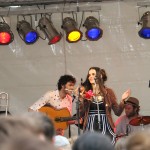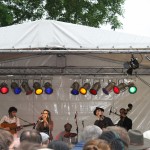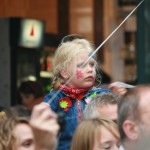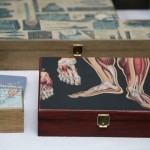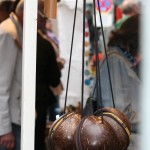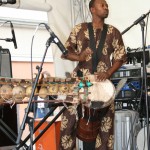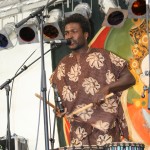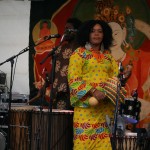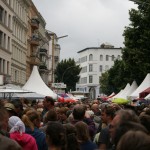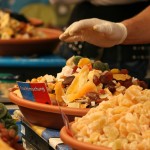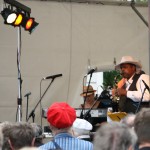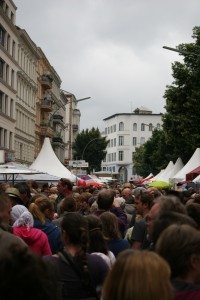
Kreuzberg’s Bergmannstrasse, a main thoroughfare in one of Berlin’s diverse and historic neighborhoods, is home to the annual Bergmannstrassenfest, a jazz and music festival which animates the area for three days each summer. A rich program attracts fans to the street, where picturesque sights and sounds can be seen, heard and enjoyed. This year, the festival took place from June 28 to 30. Over forty bands performing on four stages entertained the numerous visitors during the last days of June. The jazz festival is known throughout Berlin and even beyond the city borders, transforming the lively Bergmannstrasse area of Kreuzberg into a place of astonishing music performances and great multicultural cuisine.
Kreuzberg jazzt! is one of the highlights of Berlin summer and can pride itself with quite a long history. The festival has cherished the idea of peaceful coexistence between generations and cultures since its inauguration in 1994. The partaking bands perform on three stages each year: Mehringdamm, Upper Nostitzstrasse and Zossener Strasse. The fourth stage is theatrical and features performances for both adults and children. All of this, accompanied by excellent street food and an open market with various goods available for browsing in between the stages, makes the Bergmannstrassenfest an ideal weekend getaway for Berliners of all ages, tastes and backgrounds.
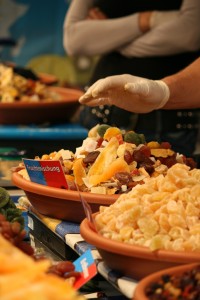
My visit to the festival-engaged and busy Bergmannstrasse was on Saturday, June 29. Despite the whirling wind and the rainy weather, the street was crowded with music and theatre fans, as well as those who love big happenings and indulging in exotic, freshly-made food. Even while enjoying the diverse sounds coming from different stages, one could not escape the inviting scents of variously prepared falafel and French crêpes with chocolate whose persuasive olfactory calls left no ‘hungry eyes’ indifferent.
During my time at the festival, the Upper Nostitzstrasse stage featured Lanaya, a cheerful group from Burkina Faso who definitely enhanced the dancing atmosphere amongst the spectators. Traditional African sounds, accompanied by singing and dancing in national Burkina Faso costumes, enticed the Nostitzstrasse passengers to begin moving convivially, awaking their curiosity for the origin of the cheerful sound and then satisfying it with energetic notes of African instruments on a cloudy Saturday afternoon.
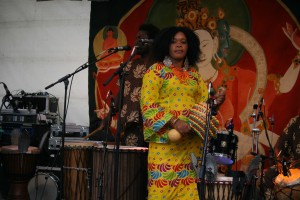
Music can indeed be such a powerful medium – I remember feeling as if the sounds of the African drums and the voices of the native Burkina Faso vocals were carrying me on a carpet made of musical notes, whose balance and firmness were constantly reenacted with the rise in the rebounding rhythm. I myself felt as a part of the Burkina Faso culture in those moments, lost in the novel vastness of the experience this far away country had bestowed upon me.
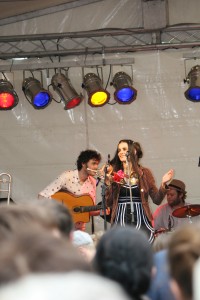
Another compelling band – The Goodnight Circus – entertained the eager ears by balancing Swing, Jazz and Balkan beats on the Zossener Strasse stage from 4:30 pm to 6 pm. The group is comprised of various international stylistic elements and enjoys a worldwide fan base. The partaking musicians are an interesting mix of residential Berliners hailing from different musical disciplines: Swing, ‘Hot Balkan beat’ and New Orleans jazz. Although the merry sounds of The Goodnight Circus were indeed enjoyable and uplifting, it remains a mystery to me why exactly the ‘Balkan beat’ genre bears the word ‘Balkan’, which of course comes along with all of its associations. I have spent the majority of my life in the Balkans – and truth be told, what Berliners call the ‘Balkan party music’ is almost non-existent in at least my part of the world, the Western Balkans. This is just a side note on the inexplicability of this phenomenon, which I sincerely hope I will be able to track down one day. Nevertheless, all technicalities aside, the Balkan sounds of Zossener Strasse managed to put smiles on the curious faces of passers-by – my own included.
The Mehringdamm stage on the second day of the festival offered a high-quality program of Swing, Soul and Blues music. From the stories about the events on this stage, to my own experience of the Blues performance of EB Davis & The Superband in the evening, Mehringdamm did not fail to incite excitement among the spectators throughout the festival. Berlin has once again proven to me that Blues fans amongst us – Berliners and those who wish to be called that way – are still very much alive and ready for action. Continuing that line of thought, the overwhelming popularity of the previously mentioned Mehringdamm performance made it almost impossible for me to approach the stage to take photos. Mehringdamm was also the last stage I visited during a nearly day-long stroll through the Bergmannstrasse. The sounds of bass guitar, trumpet and saxophone – some of the classic blues instruments – accompanied by EB Davis’ majestic voice, gave a perfect concluding note to one of my best Berlin experiences so far.
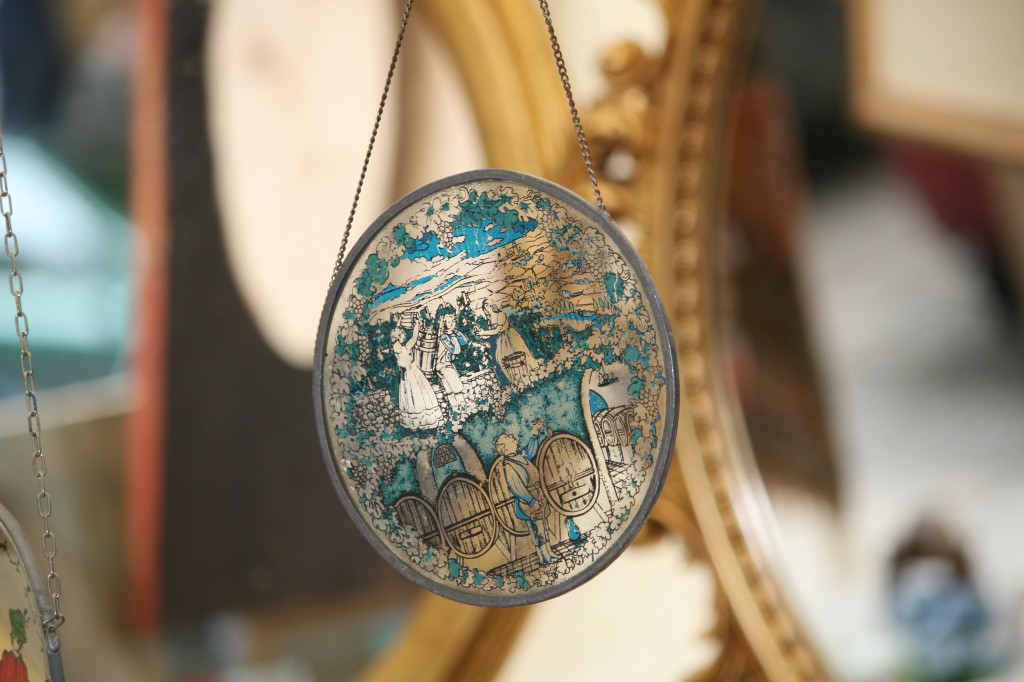
As one of the city’s biggest street festivals, Bergmannstrassenfest succeeded in illuminating Berlin’s multiculturalism through diversity in acts and street attractions. The friendly atmosphere between people and smiling faces all around me transcended an overall feeling of togetherness and positive vibes that can only be felt in a lively and crowded public place such as Bergmannstrasse. It did not matter where everyone at the festival was from. We all experienced the enticing sounds, vivid images and exotic smells as fellow Berliners – and such collective feeling is in my eyes exactly what makes this annual event certainly one of the best of its kind.
Photo gallery:

